So ändern Sie den Sicherungsspeicherort von iTunes
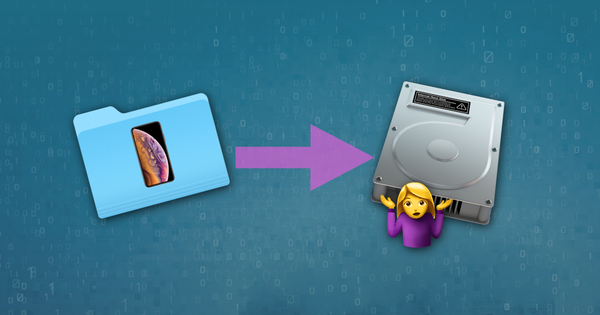
Der Standardspeicherort für iTunes-Backups ist der primäre Datenträger des PCs oder Macs, und in macOS 10.15 werden von Finder erstellte iOS-Backups an derselben Stelle gespeichert. Viele Benutzer haben umfangreiche Backups oder Backups von einer Reihe von iOS-Geräten. Infolgedessen ist der Festplattenspeicher fast erschöpft.
Es ist möglich, einen Computer so zu konfigurieren, dass iTunes auf einer zweiten Festplatte oder auf einer externen Festplatte oder einem NAS gesichert wird.
Einfach gesagt, dies geschieht durch Ersetzen des iTunes-Sicherungsordners durch einen symbolischen Link zum gewünschten Speicherort. Dies ist eine leicht umkehrbare Änderung. Es ist daher möglich, den Standard-Sicherungsspeicherort in seinem ursprünglichen Verzeichnis wiederherzustellen.
Bitte beachten Sie, dass der iTunes-Sicherungsvorgang fehlschlägt, wenn der iTunes-Sicherungsspeicherort in ein Volume geändert wird, das nicht immer verfügbar ist.
Was du brauchen wirst
Um den Standardspeicherort für iTunes-Backups auf Ihrem Computer zu ändern, ist Folgendes erforderlich:
- Mittlere Kompetenz mit einem PC oder Mac
- 10 Minuten
- Ein Verständnis des gewünschten neuen Sicherungspfad
- Ein Mac mit Mac OS 10.7 oder neuer oder ein PC mit Windows Vista oder neuer
- Das Reincubate-Supportteam steht zur Verfügung und kann die Kunden in dieser Hinsicht beraten.
Automatisches Ändern des iTunes iOS-Sicherungsordners
Die kostenlose Version des iPhone Backup Extractor zeigt Ihnen automatisch das standardmäßige Backup-Verzeichnis Ihres Computers an - und lässt Sie es ändern.
- Laden Sie den iPhone Backup Extractor herunter und installieren Sie ihn.
- Wählen Sie
Preferencesaus dem Hauptmenü - Wählen
Backupsvon demPreferencesFenster![Im Bereich "Einstellungen" werden die Sicherungsspeicherorte angezeigt The "Preferences" pane showing backup locations]()
Im Bereich "Einstellungen" werden die Sicherungsspeicherorte angezeigt - Klicken Sie auf die Schaltfläche
Change, um den Standard-Sicherungsordner von iTunes zu ändern.
Manuelles Ändern des iTunes iOS-Sicherungsordners unter Windows
- Open the default Backup location in Explorer using the Windows Run command. Press
⊞ Win+Rand the Run window should appear. For Windows 7, 8 and Windows 10 iTunes Apple version, enter%APPDATA%\Apple Computer\MobileSyncand press⏎ Enter. For iTunes Microsoft Store version, enter\Users\[USERNAME]\Apple\MobileSync\Backup, where[USERNAME]is your Windows user name. - Das sich öffnende Explorer-Fenster zeigt einen Ordner mit dem Namen "Backup". Dies enthält alle iTunes-Sicherungen, die bereits auf dem Computer vorhanden sind. Um den Speicherort des Sicherungsordners zu ändern, muss dieser Ordner umbenannt, verschoben oder gelöscht werden. Als Beispiel könnte man es in "Backup (Old)" umbenennen.
- Nachdem der Ordner "Backup" umbenannt, verschoben oder gelöscht wurde, kann ein symbolischer Link zum gewünschten Backup-Speicherort erstellt werden. Dazu muss ein Befehlsfenster geöffnet werden. Wenn Sie im zuletzt geöffneten
MobileSyncExplorer-Fenster⇧ ShiftMobileSynchalten und mit der rechten MaustasteMobileSync, wird ein Menü mit der Option "Befehlsfenster hier öffnen" oder "PowerShell-Fenster hier öffnen"MobileSync. Klicken Sie das an. - Verwenden Sie den folgenden Befehl
mklink /d Backup "[desired-new-backup-path]". Sobald dieser Befehl eingegeben wurde, drücken Sie⏎ Enterund die Änderung ist abgeschlossen. - Nach dem Neustart von Windows speichert iTunes seine Backups am neuen Speicherort.
Manuelles Ändern des iTunes iOS-Sicherungsordners unter macOS
- Starten Sie die macOS Terminal-Anwendung. Diese finden Sie im Finder unter
Applications / Utilities / Terminal. Alternativ kann es auch mit Spotlight durch Drücken von⌘ Cmd+ gestartet werdenund geben Sie "Terminal" ein, bevor Sie⏎ Enter. - Weisen Sie das Terminal an, zum Standardspeicherort von iTunes zu wechseln, indem Sie
cd ~/Library/Application\ Support/MobileSyncund dann⏎ Enter. - Zeigen Sie den aktuellen Sicherungsordner im Finder an, indem Sie
open .eingebenopen .und drücken⏎ Enterdann⏎ Enter. - Das sich öffnende Finder-Fenster zeigt einen Ordner mit dem Namen "Backup". Dies enthält alle iTunes-Sicherungen, die bereits auf dem Computer vorhanden sind. Um den Speicherort des Sicherungsordners zu ändern, muss dieser Ordner umbenannt, verschoben oder gelöscht werden. Als Beispiel könnte man es in "Backup (Old)" umbenennen.
- Nachdem der Ordner "Backup" umbenannt, verschoben oder gelöscht wurde, kann ein symbolischer Link zum gewünschten Backup-Speicherort erstellt werden. Verwenden Sie den folgenden Befehl
ln -s [desired-new-backup-path] ~/Library/Application\ Support/MobileSync/Backup. Nachdem Sie diesen Befehl eingegeben haben, drücken Sie⏎ EnterDie Änderung ist damit abgeschlossen. - Nach dem Neustart des Macs speichert iTunes seine Backups am neuen Speicherort.
So stellen Sie den iTunes-Sicherungsordner am ursprünglichen Speicherort wieder her
Wenn Sie die oben genannten Schritte ausgeführt haben und die Änderung widerspiegeln möchten, ist der Prozess einfach:
- Navigieren Sie zum iTunes-Sicherungsordner .
- Löschen Sie den
BackupSymlink, der dort angezeigt wird. - Ziehen Sie den ursprünglichen
Backupzurück in den Ordner und benennen Sie ihn ggf. um, damit er dem ursprünglichen Namen entspricht.
Andere Herausforderungen?
Wir hatten einige Benutzer, die ihren iTunes-Sicherungsordner bereits an einen anderen Speicherort verschoben haben - einfach per Ziehen - und jetzt fehlt der erforderliche Symlink für iTunes, um das Backup anzuzeigen.
Es ist leicht zu lösen, und es gibt zwei Möglichkeiten:
Ziehen Sie den Ordner an den ursprünglichen Ort zurück. Wenn Sie vergessen haben, sollte es als
Backupwerden und lebt in~/Library/Application Support/MobileSync.Erstellen Sie einen symbolischen Link, der darauf verweist - auf dieselbe Weise wie in den obigen Anweisungen beschrieben. Wenn Sie sich in diesem Stadium befinden, sollten Sie ein Terminal öffnen und folgendes tun:
cd [location of the folder which now has "Backup" in it] ln -s Backup ~/Library/Application\ Support/MobileSync
So einfach sollte es sein.
Gibt es Situationen, in denen dies nicht möglich ist?
Diese Technik funktioniert auf jedem Mac, jedoch nicht auf Windows-PCs, die vor 2000 gebaut wurden. Vor der Veröffentlichung von Windows 2000 verwendete Windows standardmäßig FAT-formatierte Dateisysteme , die keine Symlinks erstellen können. Bei jedem Windows-PC-Build werden seitdem mit Sicherheit NTFS-Festplatten verwendet, und diese unterstützen symbolische Links. Wenn Sie FAT ausführen und versuchen, eine Verknüpfung zu erstellen, wird möglicherweise dieser Fehler angezeigt: Local volumes are required to complete the operation.
Glücklicherweise bietet Microsoft einige Anweisungen zum Aktualisieren einer Festplatte von FAT auf NTFS . Es ist etwas technischer, aber es ist möglich.
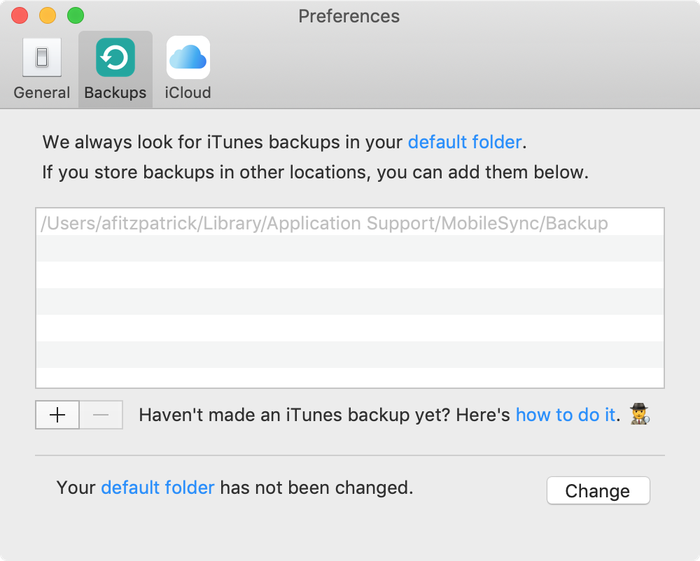

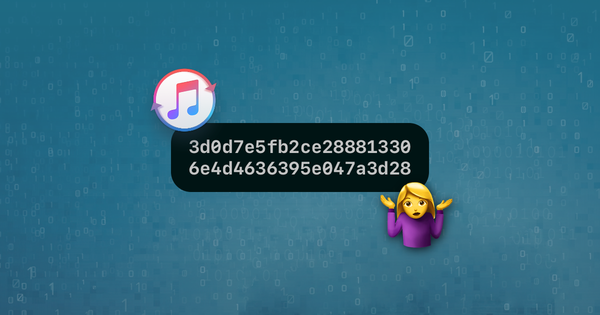

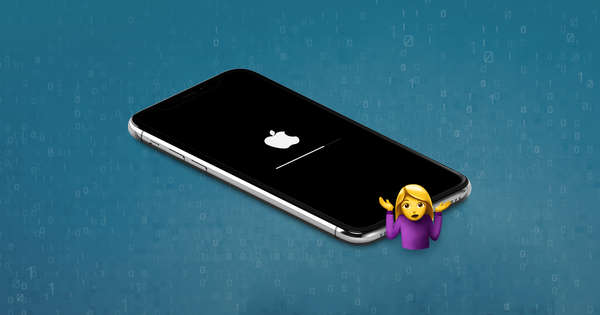
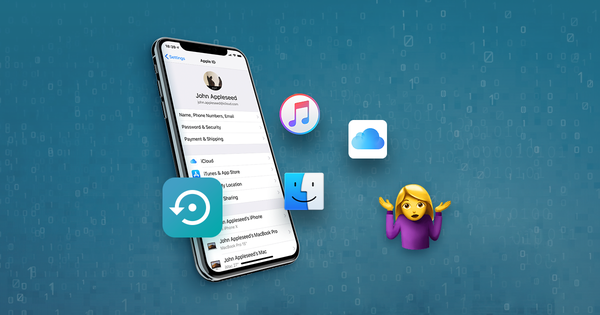
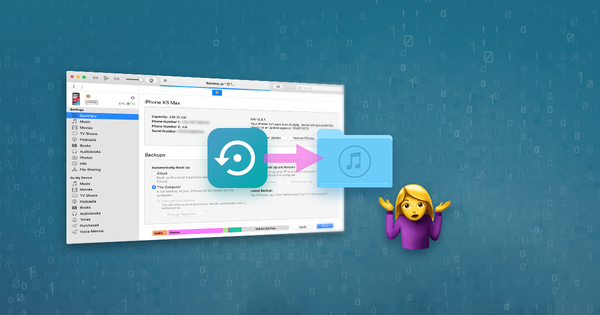
von Gael
Bonjour,
J'essaie tant bien que mal de déplacer ce Backup et de créer un lien symbolique. Cependant, la seule réponse que j'ai est: illegal option -- /
Je vous laisse le chemin que j'utilise et si une âme charitable veut bien m'aiguiller. Merci :)
ln -s/Volumes/VERBATIM\ HD/SAUVEGARDE\ IPHONE/ ~/Library/Application\ Support/MobileSync/Backup ln: illegal option -- / usage: ln [-Ffhinsv] source_file [target_file] ln [-Ffhinsv] source_file ... target_dir link source_file target_file
antworten Sie mit: Reincubate Support
Salut Gael, merci d'avoir écrit! Le problème ici est l'espace ("") entre votre chemin et les barres obliques.
Il doit s'agir de
ln -s /Volumes/VERBATIM\ HD/SAUVEGARDE\ IPHONE/ ~ /Library/Application\ Support/MobileSync/Backup, et non deln -s / Volumes / VERBATIM \ HD / SAUVEGARDE \ IPHONE / ~ / Library / Application \ Support / MobileSync / BackupFaites-nous savoir si vous avez besoin d'aide! 🙂
von Alex
Backing up to remote Synology server (not local). All you need:
thanks
von Samuel Kwok
Exactly what I needed. I don't want to store on my MacBook as it takes 200GB. This allows me to move to a Time Capsule. I don't use Time Machine but I use Time Capsule as a network drive and another copy of the whole Time Capsule to another network drive.
antworten Sie mit: Reincubate Support
Glad it helped!
von Rick Galloway
I've got the symbolic link created, but my iPhone back up still goes to the original C: drive location. When I look on my k: drive, I do not see the symbolic link file subdirectory even though it said it was created.
antworten Sie mit: Reincubate Support
Hi Rick: the symlink should be in your C: drive, in
MobileSync, and calledBackups. It'd be that that points to the K: drive in your case. If you get stuck, why not use the functionality in iPhone Backup Extractor? It can do it for you, and it's in the free edition.von Colleen Gordon
How do I figure out the my desired new backup location path? I want to use an external drive.
antworten Sie mit: Reincubate Support
Hi Colleen, thanks for commenting. If you use the functionality in iPhone Backup Extractor to change location, you can make the change simply by browsing to the folder you want. That might be easier! 🙂
von Mike L.
A fix to the insufficient permissions error--
Since I got the permissions insufficient in both cmd and powershell. First you search
cmdand then right click the command prompt app and run as admin. Navigate to the directory using the cd command ex.(cd c:\users\youruser\apple\mobilesync). once in the directory you can use the (mklink /d backup [new directory]) command listed in the article. That worked for me.As a side note, when using the cd command to navigate remember that you will likely have to put any folders with a space in the name inside quotation marks ex.(
cd c:\users\"this user"\apple\mobilesync). hopefully this helps some avoid the hassle of having to figure out this process if you get that persistent insufficient permissions response.von Aaron
Hello Aidan!
So I'm trying to change the backup path on Windows, and of course get the "insufficient privilege" error in the regular Powershell. So I ran it as administrator by typing it in the search bar and it said it created the symbolic link to the location, so I restarted my PC & tried updating iOs but the backup still went through to the original location (my hard drive, while I wanna change it to an external one simply 'cause I don't have enough space left on the former, lol).
So I guess my question is: how do I run Powershell in the MobileSync window as admin/how do I get the one I open through the search bar as admin to go to the MobileSync folder location so I can properly create the symbolic link & switch it up? :/
P.S. I did skip step one if I'm being honest, but only did so 'cause I already found the location manually, then proceeded to follow the instructions w/ renaming the folder, etc. Might this be the reason why it's not working? If so, shall I re-rename it to its original "Backup" name and try it again with the 1st step? I doubt it since I can't get the Powershell to go to the MobileSync location while I run it as admin to begin with/can't change it without running it as admin in the aforementioned window...Then again what do I know, lol.
P.P.S. Does the admin-run Powershell not need the MobileSync path to be put in and can successfully render the switcheroo by typing the featured command right after the "system32" path? If so, what seems to be the problem?
I was hoping to update my iOS tonight, and am getting more & more frustrated as we speak. Sorry for the post being so jumbled, hope all's clear. Thanks for the help!
antworten Sie mit: Reincubate Support
Hi Aaron, thanks for the comment.
Yes, if you skipped step 1 your Powershell will be looking in the wrong folder, so it won't have created the symbolic link in the right place.
If you've already got a Powershell or command window open, you can make it change folder with this command:
cd %APPDATA%\Apple Computer\MobileSync(If it's looking at the wrong drive, you'll have to change drive by typing
C:.)We've reached out to you directly to help, but if anyone else runs into the same problem, we'd recommend undoing the steps you took, starting over, and making sure to include the first step. 🙂
von Mohamed
I tried it, the following error popped up .. Plz advise
antworten Sie mit: Reincubate Support
Hi Mohamed, it looks like you're using PowerShell to run the command. If that's the case, you must prefix you command with
cmd /c, so it's likecmd /c mklink, etc.von Sean
I'm trying to do this on Mac OS 10.14.6 (Mohave), but when I try Step 5, I receive a "Operation Not Permitted" message. Any ideas...?
antworten Sie mit: Reincubate Support
Hi Sean, thanks for commenting. On macOS Mojave and newer, you'll need to grant "Full Disk Access" to your Terminal in order to make the change. There's a how-to on how to do this for iPhone Backup Extractor here, I hope that helps!
von Max
Thank you for the article. Here are a few notes to help somebody.
CD(include space). Example:CD C:\Users\Username (change this)\AppData\Roaming\Apple Computer\MobileSyncmklink /d Backup "L:\Users\XYZ"von Joe
I'm still having trouble with permissions, when I open up powershell in admin I get a command line PS
C:\Windows\System32>I don't seem to be able to open it in admin mode from the file path of the itunes back up.antworten Sie mit: Reincubate Support
Hey Joe, you can change directory using the
cdcommand. Try this:cd %APPDATA%\Apple Computer\MobileSyncvon Jess
Thanks for this assistance! I too got stuck on the "you do not have sufficient privilege to perform this operation." I then followed your advice in the comments above and ran Powershell as an administrator, but the Powershell window that opens from the MobileSync folder doesn't seem to recognize that and keeps giving me the same message. What do I do from here? Thanks!
antworten Sie mit: Reincubate Support
Hey Jess, thanks for writing. It's the same privilege error you're getting? If you drop us a note I'm sure we can guide you through it.
von Андрей
У меня выдает ошибку в PowerShell mklink : Имя "mklink" не распознано как имя командлета, функции, файла сценария или выполняемой программы. Проверьте правильность написания имени, а также наличие и правильность пути, после чего повторите попытку. строка:1 знак:1 + mklink /d Backup "[desired-new-backup-path]" + ~~~~~~ + CategoryInfo : ObjectNotFound: (mklink:String) [], CommandNotFoundException + FullyQualifiedErrorId : CommandNotFoundException
antworten Sie mit: Reincubate Support
Привет Андрей, попробуй
cmd /c mklinkи так далее 🙂von Hogan
Hi Aidan, Thanks for your amazing instructions!
I have run them on my Mac but got an error saying "Library/Application Support/MobileSync/Backup: No such file or directory". I guess this happened because I have renamed the old "Backup" file. Actually, it also confuses me a lot when u say "Once the 'Backup' folder has been renamed.../Backup", as the original "Backup" file doesn't exist anymore(right?)
Looking forward to your further clarification. Thanks :)
antworten Sie mit: Reincubate Support
Hi Hogan, thanks for your kind words. That second "Backup" reference is assuming you didn't change the folder's name, but simply moved it elsewhere. If you did rename it, you'd want to change it in that command. I hope this is clear. If it's not, do drop us a note. (Or use iPhone Backup Extractor to move it for you, as the free version can automate this process.)
von Luna
hi i get this message when i try and finalize the path: "You do not have sufficient privilege to perform this operation." It's my computer and i understand it has to do with admin rights but how do i run windows powershell as admin?
antworten Sie mit: Reincubate Support
Hey Luna! No problem: on Windows, you'd click on the "Start" button, then type "powershell". You'll see the menu search eventually shows you the PowerShell icon. If you right-click on that, you'll see there's a "Run as Administrator" option. Good luck -- I've asked our support team to drop you an email directly in case you need further help. 🙂
von Cedric koh
If I were to delete the backup symlink in the itunes MobileSync folder,how will that affect the backup folder i used for the symlink in my other drive? Will the files inside the backup folder in my other drive be unusable?
antworten Sie mit: Reincubate Support
Hi, thanks for stopping by. Removing the symlink is safe: it will effectively just remove the pointer to the backup folder on your other drive. The files will still be usable, but iTunes (or Finder) won't know where to look for them.
You could then move the files back to where they were originally -- or create another symlink.
von PBHRider
Great work. How do you come up with this stuff? Did the manual method on Windows 10 using the command prompt with admin privilges and am now backing up my iphones etc to my NAS drive. Saving about 4Gb on my SSD on my laptop. Thank you.
antworten Sie mit: Reincubate Support
Really pleased it worked out for you. 👍 Don't be a stranger if you need help in future!
von Michael Milbourn
You do not have sufficient privilege to perform this operation. It's my computer, who is not letting me change things on it?
antworten Sie mit: Reincubate Support
Michael -- if you're on a Windows machine, trying running these commands in a Windows Command that has been launched with "Run as Administrator".
von Lucas
Works like a charm! I followed the instructions for manually changing the iTunes iOS backup folder on Windows (through PowerShell). It is exactly what I was looking for to free up space on my C: drive. Thank you so much Aidan!
antworten Sie mit: Reincubate Support
Our pleasure, we're glad it helped!
von Brad
Thank you for this
von kalveer kaur lehal
Hi thanks for this. I get an error saying:
Local volumes are required to complete the operation.
How can I fix this please? Thanks
antworten Sie mit: Reincubate Support
Hi Kalveer, this message suggests your filesystem is FAT-based. I've updated the article to include a mention of why it's not possible to create links on FAT. I've also included a link to instructions on upgrading to NTFS. Good luck!
von Greg
Awesome instructions, thank you! I think there is a typo on step 5 for Mac. The command line is written as
-s [desired-new-backup-path] ~/Library/Application\ Support/MobileSync/Backupbut the folder "Support/MobileSync/Backup" doesn't exist since we moved/deleted it. I had to change it to "Support/MobileSync" and then the folder I linked to was called "Backup".antworten Sie mit: Reincubate Support
Howdy Greg! Having "Backup" in the path should be correct, as it'll ensure the link that gets created is called "Backup". Makes sense?
We've got something up our sleeves to make this a little easier in future. Keep an eye on the release notes. 😏
von salma
hi ! i did all the steps but i kinda don't get where is the new backup location now ?
antworten Sie mit: Reincubate Support
Hi Salma -- the new location will be the folder you created the link to!
von Clint
Firstly Aidan - thank you very much for this.
My main drive is a (relatively) small SSD and I would like to be able to save my iTunes backups to the NAS setup instead. You have provided a fantastic workaround!
One thing I wasn't sure about was at step 3 (Windows) - when you right-click (to choose "Open PowerShell window here"), is that in the Explorer window of the now renamed Backup folder? Eg, in the now-named "BackupOld" folder window?
antworten Sie mit: Reincubate Support
Hi Clint, thanks for your kind words. I've updated the article to make it crystal clear: the window you right-click in is the one you opened at
%APPDATA%\Apple Computer\MobileSync.von Hugues Larouche
And how do you reverse it on Windows PC ? Thx
antworten Sie mit: Reincubate Support
Hugues, thanks for your comment. I've updated the article to explain that!
von Fred Brunson
Aidan, I don't understand your instructions in How to change the iTunes backup location. What do you mean by prefix your command in PowerShell with cmd /c, like mklink /J Backup "[desired-new-backup-path]".
antworten Sie mit: Reincubate Support
Hey Fred, thanks for asking. Just like this:
I'll tweak the explanatory text to make it clearer.